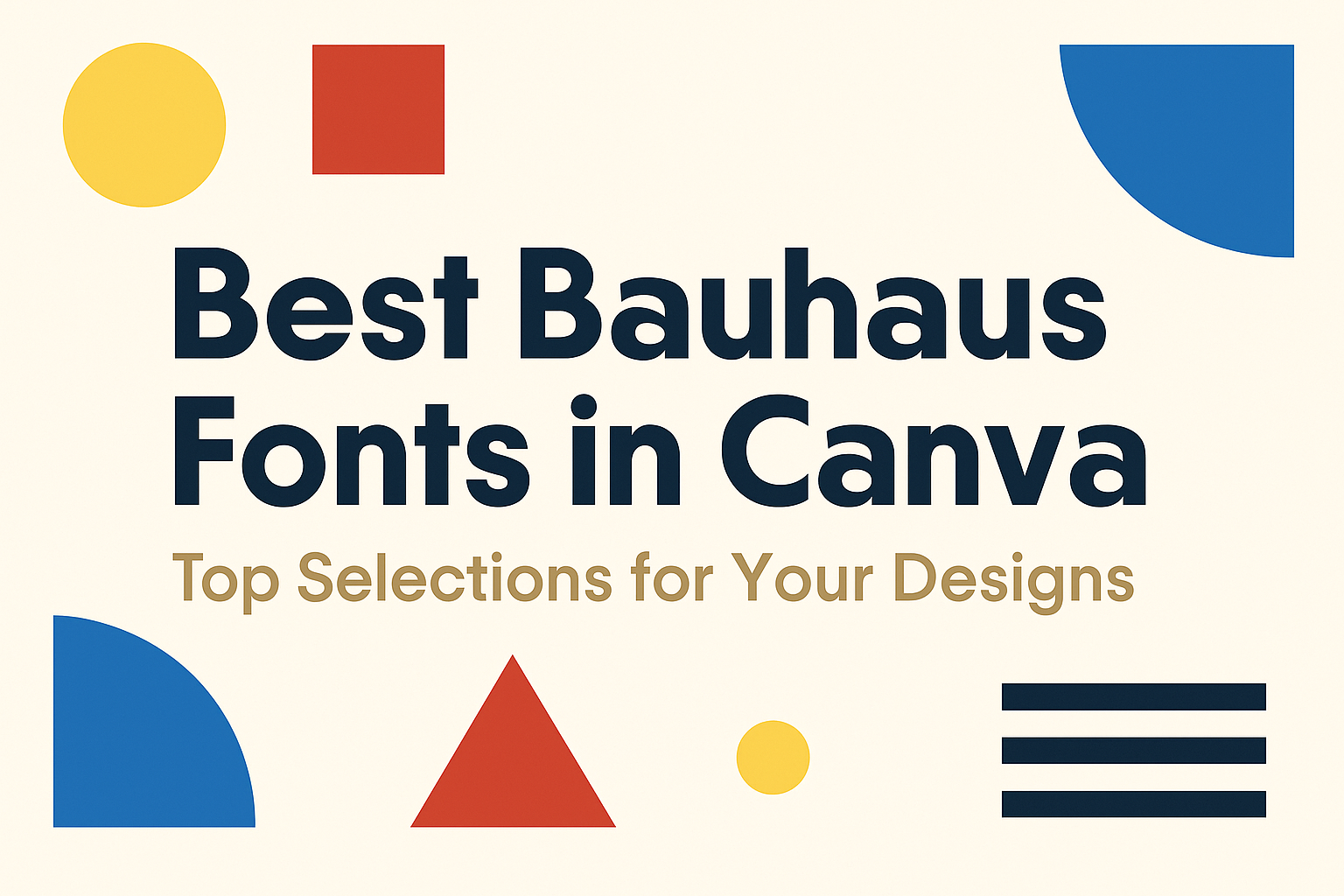Bauhaus fonts are known for their clean lines and modern appeal, making them a favorite for design projects.
In Canva, some of the best Bauhaus-inspired fonts can elevate any design through their unique aesthetic and readability.
Whether for branding, posters, or digital content, the right font can make a significant difference.
Choosing the perfect Bauhaus font can be challenging with so many options available in Canva. This article will explore the top choices that capture the essence of Bauhaus design while ensuring great legibility and style.
By discovering these fonts, designers can enhance their creative projects with not just beauty but also clarity.
From contemporary alternatives like Avenir to bold options such as Bebas Neue, each font offers distinctive features. Readers will find insights into how these fonts can be used effectively, ensuring their designs stand out in a crowd.
History of Bauhaus Design
Bauhaus design has a rich history that began in the early 20th century. This movement focused on unity in art, architecture, and design, emphasizing functionality and simplicity.
Understanding its origins and impact on typography provides a clearer picture of its lasting legacy.
Origins and Principles
The Bauhaus school was founded in 1919 in Weimar, Germany, by Walter Gropius. It aimed to bridge the gap between art and industry through an integrated approach to design.
The school promoted a philosophy that valued creativity as much as practicality.
Key principles of Bauhaus include:
- Functionality: Designs were to serve a purpose without unnecessary embellishment.
- Simplicity: Clean lines and geometric shapes defined the aesthetic, making designs easy to replicate.
- Unity: Different art forms, such as architecture, textile design, and graphic arts, were seen as interconnected.
These principles helped shape modern design, moving away from ornamental styles to more minimalist approaches.
Influence on Typography
Bauhaus significantly impacted typography, leading to the creation of clean, modern typefaces. Designers sought to create fonts that were both functional and visually appealing, aligning with Bauhaus ideals.
Notable characteristics of Bauhaus typography include:
- Geometric Shapes: Many typefaces, like Futura, use simple forms that reflect the movement’s aesthetics.
- Legibility: Emphasis on readability improved communication and functionality in design.
- Innovation: The Bauhaus encouraged experimentation with letters and spacing, resulting in unique designs.
This focus on clarity and simplicity has influenced countless designers and remains evident in contemporary typography today.
Selecting Bauhaus Fonts in Canva
When choosing Bauhaus fonts in Canva, it is important to understand their unique features and the most popular options available. These fonts are known for their geometric shapes and modern appeal, making them ideal for various design projects.
Font Characteristics
Bauhaus fonts are characterized by their bold, clean lines and geometric forms. They often use sans-serif styles, which means they lack the small projecting features at the ends of strokes. This simplicity results in high readability and a contemporary look.
Many Bauhaus fonts have a balanced appearance, featuring even weight across the characters. This makes them suitable for both headings and body text.
The strength of these fonts lies in their ability to convey a sense of modernity while remaining accessible.
Colors can also enhance their impact. Using solid colors, such as black or bright shades, can bring out the best in these fonts. They thrive in minimalist designs, which are common in Bauhaus-inspired graphics.
Popular Bauhaus Fonts
Several Bauhaus fonts stand out in Canva. One well-known option is Avenir. This font embodies the Bauhaus principles with its geometric simplicity and excellent readability.
Another popular choice is Bebas Neue. This sans-serif font is bold and has uppercase letterforms that capture the Bauhaus aesthetic perfectly.
Additionally, Bergen Sans is a modern alternative designed with clean lines, making it ideal for many design needs.
These fonts allow designers to create eye-catching, professional-looking content. Each option provides distinct strengths, so exploring them in Canva can lead to effective and engaging designs.
Using Bauhaus Fonts Effectively
Bauhaus fonts feature clean lines and geometric shapes that can enhance any design. To use them effectively, it’s important to consider design techniques and font combinations that show off their strengths.
Design Tips and Tricks
Bauhaus fonts shine in minimalistic designs. They work well with plenty of white space to let the font breathe.
When using these fonts, aim for a limited color palette. This keeps the focus on the typography.
When designing headers, bold weights of Bauhaus fonts like Bebas Neue create impact. For body text, lighter versions of the font can improve readability.
Mixing font sizes can also help highlight key information, but remember to keep it balanced.
Finally, consider alignment. Centered text can work well for titles, while left-aligned is better for paragraphs. This approach supports clarity and flow in the overall design.
Combining Fonts
Combining Bauhaus fonts with other typefaces can create visual interest.
When pairing fonts, choose complementary styles. For instance, a sans-serif like Avenir works well alongside Bauhaus fonts. This adds a modern touch while ensuring readability.
A good rule of thumb is to limit font combinations to two or three different styles. This prevents the design from feeling cluttered.
When mixing weights, use bold for headlines and regular for body text.
Experiment with different layouts to see what feels right.
Combining fonts is all about striking a balance, so take the time to tweak and adjust until it flows smoothly.

